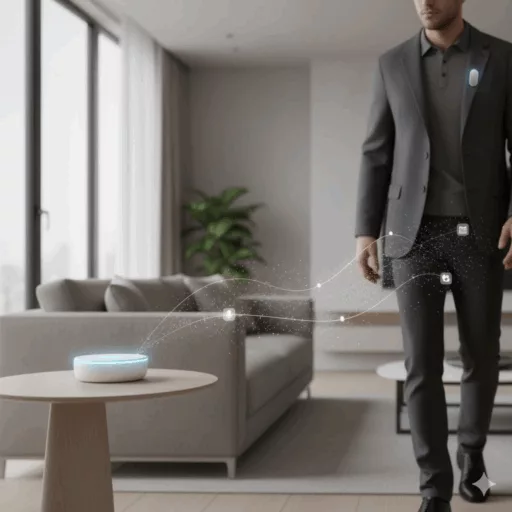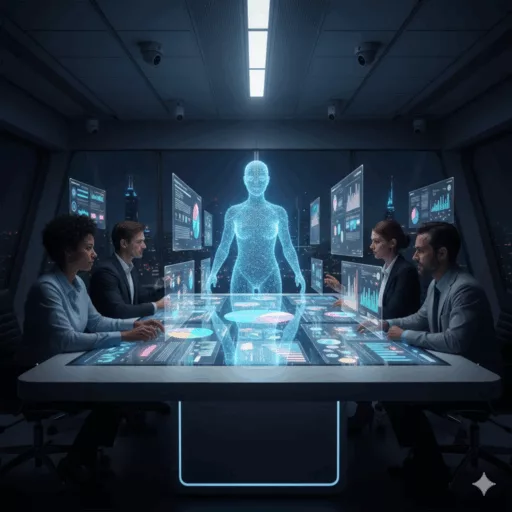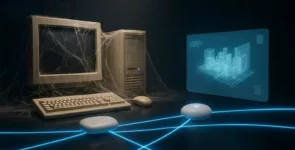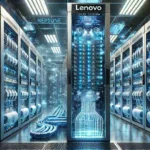Let’s start by stating the obvious: the PC is dead.
This may sound hyperbolic, especially as every major manufacturer is tripping over themselves to sell you a “true AI PC.” They’ll point to new chips with powerful Neural Processing Units (NPUs) and a dedicated Copilot key. But this is a false dawn. What they are selling you is not a new paradigm; it’s a faster version of an old one. It’s a horse that’s been bred to be slightly quicker, just as the automobile is being invented.
The personal computer—the self-contained clamshell or desktop box—was a brilliant invention for the Information Age. It was a tool for manual tasks: typing documents, organizing spreadsheets and retrieving files. Its design, centered on a keyboard and mouse, is a masterpiece of ergonomics for discrete, physical input.
The AI Age, however, is not about manual tasks. It’s about cognitive collaboration. We are moving from a world where we command a tool to one where we converse with a partner. And the fundamental bottleneck of the old PC is input/output. We can think and speak at over 150 words per minute, but we type at 40. We are trying to have a fluid, high-speed conceptual conversation with a near-sentient intelligence by tapping on little plastic squares.
The form factor is wrong. The interface is a bottleneck. The entire concept of a “box on your desk” is an anachronism. The true AI PC isn’t a “PC” at all. It is a distributed, multi-part system that separates the brain from the interface and is designed around the way we naturally think and communicate.
The Bottleneck of the Box
For thirty years, we’ve built our workflows around the PC’s limitations. We sit down, “log on,” and enter its world. We use a mouse to manually point at icons that represent physical-world metaphors—a file, a folder, a trash bin. This is an interface designed for information retrieval, not AI-driven co-creation.
An AI, however, is not a tool you use; it’s an entity you collaborate with. It needs two things our PCs can’t provide:
- Full Context: To be truly personal, the AI needs to understand your world outside the screen. It needs to know about the meeting you just had, the design you sketched on a napkin, and the person you just met.
- High-Bandwidth Interaction: To be a true partner, it needs an interface that matches the speed of thought. You shouldn’t be “typing a prompt”; you should be having a conversation, gesturing at ideas and molding concepts spatially.
The NPU-powered laptop is a dead end because it fails on both counts. It’s still a blind box that waits for you to feed it information through a tiny straw.
The New Personal AI: A Three-Part System
The true personal AI “computer” is a three-part system that divorces the brain from the body.
First is The Core. This is a small, silent, beautifully designed hub that lives in your home. This is the actual “computer.” It runs a powerful, personalized “Personal AI Twin”—a local version of the AI that knows your habits, your voice and your data, ensuring privacy and near-instant responsiveness. This Core is your secure enclave, your personal data vault, and the I/O router that communicates with your “terminals” and the broader cloud AI when needed.Second is The Ambient Terminal. This is a subtle, all-day wearable: a pin, a pendant or a set of advanced glasses. This is the AI’s “eyes and ears,” and it solves the context problem. It passively and privately captures your day (with your permission), logging the conversation you had, the face of the new client and the whiteboard you photographed. It’s the digital amanuensis that gathers the context your Core needs to be truly proactive and helpful.

Third is The Focus Terminal. This is your “desk,” redesigned for co-creation. It has no keyboard, no mouse and no screen. It is an immersive, ergonomic canvas—perhaps a large, tilted drafting table with a haptic surface. A sophisticated projection system creates a holographic or volumetric display above the canvas. You interact with your AI through voice and gesture, pulling data into 3D charts, sketching designs with your fingers and literally “throwing away” bad ideas. This is an interface for high-bandwidth, conceptual work.
When you sit at this terminal, you don’t “boot up.” You just start the conversation. “Show me that design I saw at the coffee shop today,” you’ll say. And because your Ambient Terminal saw it and your Core processed it, the AI can instantly project it onto your canvas for you to work on.
Scaling to the Enterprise: The Federated Fabric
This personal model is revolutionary, but the true paradigm shift happens when this concept scales to the enterprise. A company cannot run on a thousand individual, isolated AIs. It needs a secure, federated system.
The “Personal Core” is replaced by the “Enterprise AI Fabric.” This is a powerful, on-premise server or a secure private cloud instance. This Fabric is the central nervous system of the company’s intelligence, and it hosts three distinct AI layers:
- The Corporate AI: The foundational model containing all company data, procedures and the single source of truth.
- Team AIs: Specialized models sandboxed for departments (e.g., “Legal AI,” “Sales AI”) that have their own private data.
- Personal AI Twins: Each employee gets a sandboxed “twin” that learns their personal workflow, but it is governed by corporate permissions.
This federated model solves the massive security and data governance problem that plagues enterprise AI today. Your personal AI can’t leak data from the legal team because it is fundamentally not permissioned to ever access it.
The New Office: Collaboration Hubs and Secure Keys
In this new enterprise, the “terminals” also evolve. The “Focus Terminal” becomes the “Collaboration Hub.” This is the new conference room. It’s no longer just a room with a TV and a speakerphone; the room is the computer.A smart wall or smart table acts as the shared immersive canvas. The “Team AI” is an active facilitator in the meeting. It transcribes, identifies speakers and—most critically—when someone says, “We need to see the Q3 sales data,” the AI projects it onto the table instantly. At the end of the meeting, it automatically generates and assigns action items to attendees based on the conversation.

The “Ambient Terminal” also gets a critical enterprise makeover. A passively-recording wearable is a corporate security nightmare. It is replaced by the “Enterprise Communicator.” This device, perhaps a smart lanyard or secure badge, is built for intentional interaction.
Its primary role is authentication. You tap it to enter a secure room or log into a hot-desk “Focus Station,” which instantly and securely loads your Personal AI Twin. It has no passive camera; it has a scanner you must aim to intentionally capture a whiteboard or document. It has no passive microphone; it has a push-to-talk button to give the AI a discrete command (“Add ‘file patent’ to my to-do list”). It provides silent, haptic notifications and a private earpiece for confidential alerts.
Wrapping Up
The “AI PC” that manufacturers are trying to sell you is a myth. It’s an attempt to shoehorn a cognitive revolution into a manual-labor form factor. The true AI PC is not a product you buy, but an ecosystem you inhabit. It’s a distributed system that separates the centralized “brain” from the human-centric “interface.” This new model—built on federated Cores, ambient context-gatherers and immersive canvases—is what will finally break the bottlenecks of the last 40 years. It will move us from using a computer to collaborating with an intelligence and, right now, it might not even run Windows.








